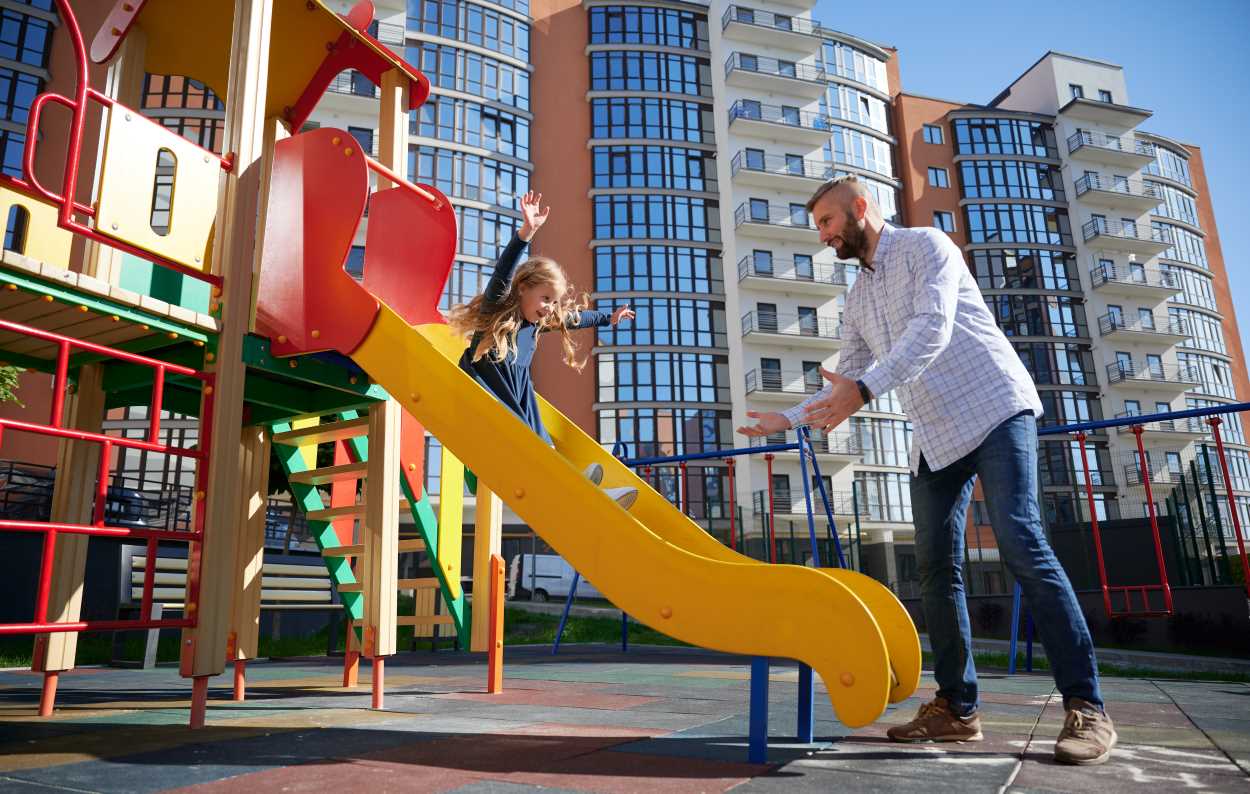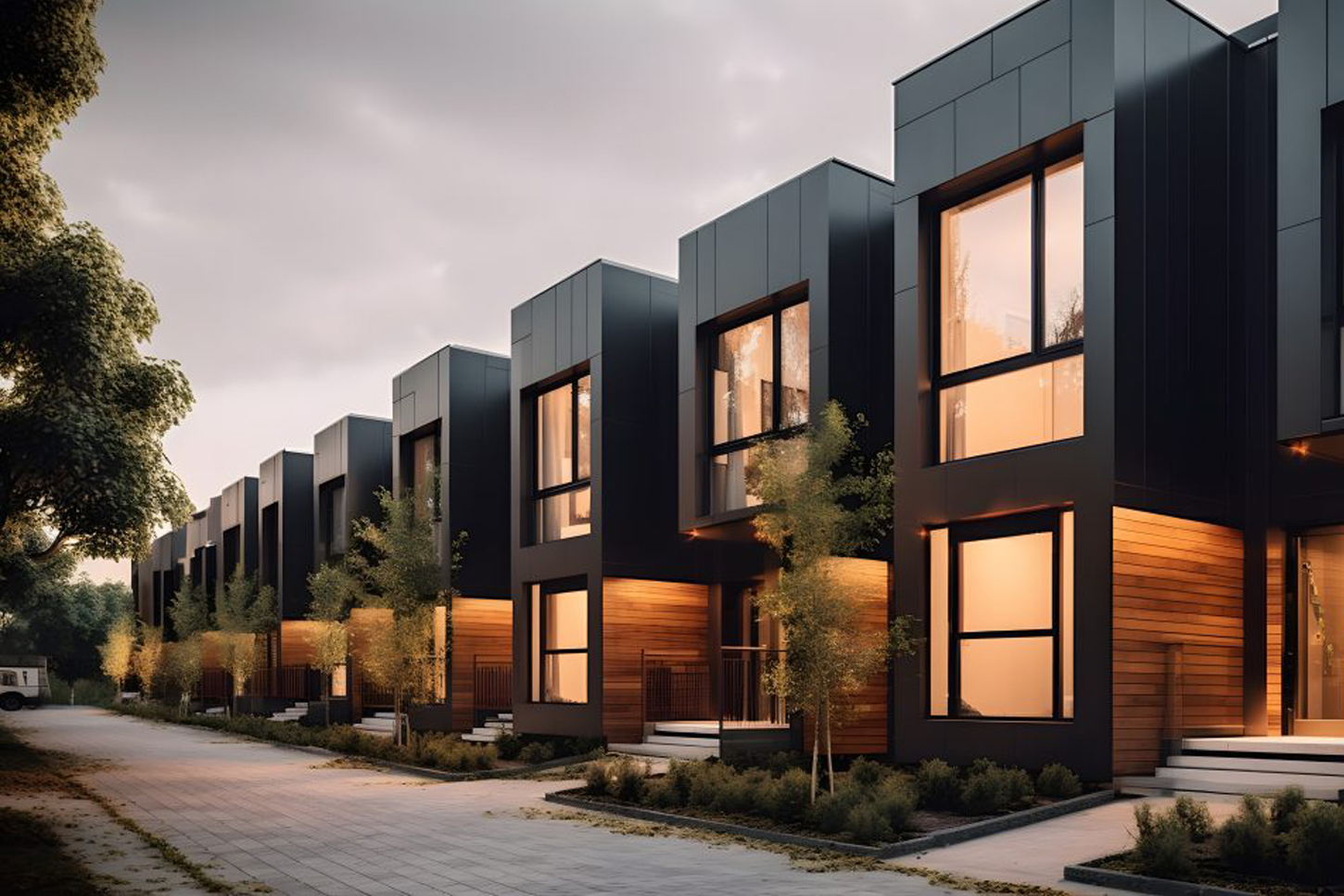If your condominium community includes a playground, you already know how much joy it brings to residents, especially families with young children. Behind the scenes, however, effective condo playground maintenance requires thoughtful oversight. For condominium board members, maintaining a shared playground is about more than fresh mulch and fun slides. It involves safety, compliance, liability management, and long-term community satisfaction.
This guide outlines everything your board needs to know about playground maintenance for condos, including inspections, budgeting, accessibility, and long-term planning.
Why Playground Maintenance Matters
A well-maintained playground is more than just a nice-to-have feature. It contributes to the community’s quality of life, improves property values, and keeps your condo corporation on the right side of legal and safety requirements.
Related Reading: Condo Landscaping Ideas to Enhance Curb Appeal This Summer
1. Safety First
The most important reason for regular maintenance is safety. Broken or worn-out equipment can cause serious injuries. Staying proactive helps prevent accidents and keeps everyone—especially the condo board—out of legal trouble.
2. Liability and Risk Management
In Ontario, condo corporations are responsible for maintaining common elements in a reasonable state of repair. A poorly maintained playground that leads to injury could expose your corporation to liability. Routine inspections and prompt repairs significantly reduce this risk.
3. Enhancing Resident Satisfaction
A clean, safe, and appealing playground encourages families to stay long-term and builds a stronger sense of community. It’s a small feature with big value—especially in family-friendly condominium communities.
What Are the Board’s Responsibilities?
As a board member, you don’t need to know the nuts and bolts of playground design—but you do need to understand your responsibilities under the Condominium Act and your corporation’s governing documents.
Understanding Common Element Obligations
The playground is likely considered a common element, meaning it’s the board’s responsibility to maintain and repair it using condo funds. That includes budgeting, hiring vendors, and overseeing regular inspections.
Leaning on Your Management Team
A good property manager can be your best asset here. They’ll coordinate vendors, keep inspection records, and flag issues before they escalate. But the board sets the tone—if maintenance isn’t prioritized, it will show.
What Goes Into an Effective Playground Maintenance Plan?
Think of playground maintenance as a cycle—inspect, plan, act, repeat. Here’s what that looks like in practice:
1. Routine Visual Inspections
Set a schedule for basic walkthroughs—monthly during the warmer months is a good start. You’ll want to check for:
-
Loose bolts or damaged equipment
-
Rust or rotting materials
-
Sharp edges or protruding hardware
-
Damaged or missing guardrails
-
Trip hazards in surfacing
-
Signs of vandalism or misuse
Don’t forget to document your findings—even if nothing’s wrong. Having a record shows you’re staying on top of things.
2. Annual or Biannual Professional Inspections
While visual inspections are important, they aren’t a substitute for a certified playground safety audit. In Ontario, playgrounds should follow the CSA Z614 Standard for children’s play spaces. Consider having a qualified inspector review your play space once or twice a year.
These professionals will assess:
-
Structural stability
-
Compliance with CSA safety zones
-
Adequate impact surfacing (like engineered wood fiber or rubber)
-
Potential entrapment hazards
You’ll receive a detailed report with recommended actions—use it as a roadmap for repairs and upgrades.
3. Regular Maintenance and Repairs
Don’t wait for things to break. Proactive maintenance extends the life of your equipment and avoids costly emergency repairs. Examples include:
-
Tightening hardware
-
Replacing worn swing chains
-
Refreshing mulch or rubber surfaces
-
Repainting or sealing wooden structures
Work with a qualified contractor familiar with playgrounds—not just a general handyman.
Don’t Forget the Surface and Surroundings
Even if the equipment is in great shape, the surrounding area needs care too.
Surfacing Is Crucial
Surfacing absorbs impact and prevents injuries. Whether you have poured-in-place rubber, pea gravel, or wood fiber, it should be level, debris-free, and meet depth standards. Refresh as needed—especially in high-traffic zones like under swings and slides.
Watch the Landscaping
Keep the area trimmed and visible. Overgrown shrubs can obscure sightlines and reduce safety. Trees should be regularly pruned to prevent falling branches or slippery leaves.
Plan for the Seasons
Spring & Summer
-
Deep clean equipment after winter
-
Inspect and top up surfacing
-
Check for damage from snow, salt, or ice
Fall
-
Rake leaves and clear walkways
-
Winterize metal or wooden components (especially if painted or stained)
-
Schedule a year-end inspection
Winter
In Canada, winter playground closures are a given—ice, snow, and freezing temperatures make play equipment unsafe and surfaces hazardous. As a board, it’s important to:
-
Clearly post signage indicating the seasonal closure
-
Remove movable parts like swing seats or loose toys to discourage off-season use
-
Inspect equipment before snowfall to identify any repairs needed once spring hits
-
Monitor the area periodically to ensure barriers or signage remain intact throughout the season
Think of the winter months as an opportunity to plan for spring maintenance or potential upgrades. Document any concerns now so you’re ready to act as soon as the weather warms up.
Budgeting and Long-Term Planning
Playgrounds are an investment—and like all common elements, they need to be included in your Reserve Fund Study.
Maintenance Costs
Set aside money for routine care, inspections, and minor repairs. It’s helpful to create an annual maintenance line in the operating budget.
Capital Replacement
All play structures eventually need replacing. Most equipment lasts 15-20 years with good care. Make sure your Reserve Fund reflects realistic replacement timelines and costs.
Communicating with Your Community
Transparency and education go a long way.
-
Post clear rules near the play area
-
Let residents know when repairs or inspections are happening
-
Encourage parents to report hazards through your property management portal
-
Share updates in your community newsletter or AGM presentations
Keeping residents informed shows the board is proactive and engaged.
Accessibility and Inclusive Play
As communities become more diverse, it’s worth reviewing whether your playground is inclusive for children of all abilities. When planning upgrades or replacements, consider:
-
Ramps for mobility device access
-
Sensory play elements (like musical features or textured panels)
-
Ground-level components for inclusive use
You don’t need to overhaul everything at once, but accessibility should be part of long-term planning—especially with Ontario’s AODA (Accessibility for Ontarians with Disabilities Act) goals in mind.
When It’s Time for an Upgrade
Even the best-kept equipment has an expiry date. Signs that it’s time for a refresh:
-
Equipment is frequently breaking or rusting
-
Safety inspections consistently flag issues
-
Replacement parts are no longer available
-
Residents complain about outdated or unappealing features
Upgrades are a great opportunity to involve the community. Survey residents on their preferences or host a town hall to gather input. Work with playground designers who understand CSA compliance and offer long-term warranties.
Final Thoughts
Managing condo playground maintenance is about more than fixing what is broken. It is about creating a safe, accessible, and enjoyable space that reflects your community’s values. With regular inspections, careful budgeting, and ongoing communication, your condominium board can ensure the playground remains a cherished part of community life.
A proactive approach today prevents costly issues tomorrow and ensures that your youngest residents can play safely, happily, and confidently.




